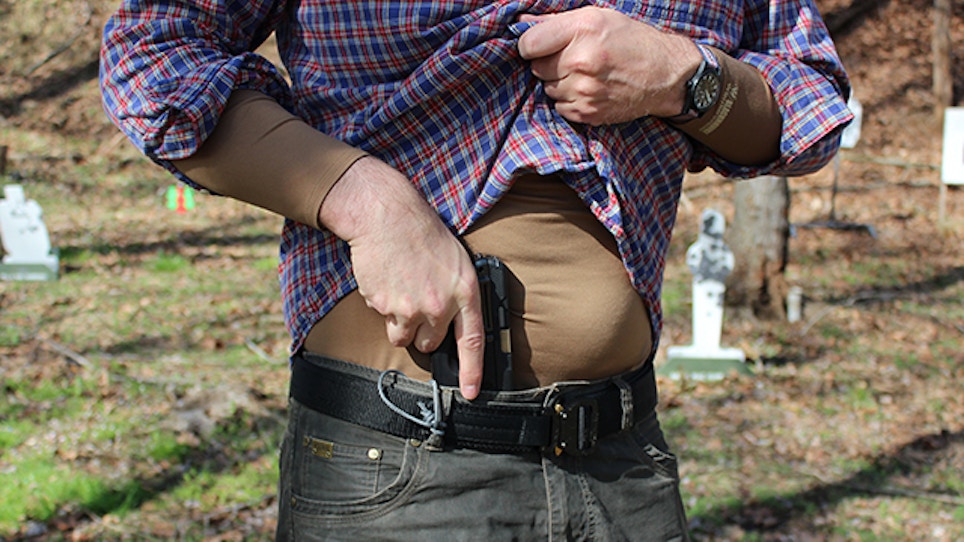How does something that should be fundamentally simple turn into a bureaucratic and legal quagmire? When the subject is firearms, that’s how.
Okay, here’s the deal. There is a thing called the Second Amendment to the Constitution of the United States. It says that citizens have the right to keep and carry arms. Simple enough, right?
Not so fast. It would be simple absent the tens of thousands of gun laws that have come into being since the Constitution went into force in 1789. We have those laws and they likely will not magically disappear anytime soon.
There are gun laws at every level of government across the land. Many of them deal with the carrying of guns. There is open carry, concealed carry — even carry laws that don’t allow a round to be in the chamber in the gun being carried. I’ve never been able to figure out that one.
To understand the discussion better, bear in mind that because such subjects as guns are so incredibly polarized, that arguments from all sides tend to focus more on minutia than meat. Pro-gun forces assume that there is a basic right to carry and that any laws start at that point. Anti-gun forces assume that no one has a right to carry a gun and that any laws start at that point.
Not likely to be a kumbaya moment where the two sides join harmoniously in verse.
Read About The Taurus Curve Concealed Carry Pistol
Also, at least to a degree, terminology tends to become a bit confusing as various efforts are conducted to expand the ability of the citizenry to own and carry arms.
The term “Constitutional Carry” is involved both directly and by inference in many current discussions. Essentially it means that a person can carry a gun. Whether the gun is in open sight, concealed, loaded or not does not weigh into that concept. It is simple and straightforward.
Vermont was the original state that recognized what we now call Constitutional Carry. Alaska, Arkansas, Arizona and Wyoming also now recognize Constitutional Carry, which does not require any form of license or permit to carry concealed or otherwise. Other states also are considering such moves.
The more states that join in the expanded gun carry arena, the more likely it is that some form of national reciprocity, at least, can be realized. It is unlikely in the near future that all 50 states will adopt true Constitutional Carry.
Concurrently, there are efforts to establish reciprocal arrangements in which a legal, gun-toting resident of one state can legally carry a gun in another state, albeit while following the laws of the other state when carrying there. This is akin to the arrangement involving driver’s licenses in which a licensed driver in one state can drive in another state, and has to follow the laws of the state in which he or she is driving.
So now Congress is getting involved with the Constitutional Concealed Carry Reciprocity Act, which includes elements of both of the concepts outlined above. It assumes that the Constitution affords the ability to carry, but also recognizes that there are concealed carry laws that differ from state to state. What it attempts to do is create a mechanism by which citizens can easily and legally carry their guns between states.
Sen. John Cornyn (R-Texas) is the lead sponsor of the Constitutional Concealed Carry Reciprocity Act. Leading that effort in the House of Representatives is Rep. Marlin Stutzman (R-IN).
For the sake of discussion, let us suppose that the measure makes its way through both houses of Congress and is sent to the president. It’s probably not likely that President Obama would sign it into law, given his history regarding gun rights.
Certainly it would be nice, indeed even proper, for the president to sign such a measure. But even if he does not sign it, the effort will have been worthwhile in some respects.
I am reminded of a discussion I had with Charlton Heston while we were shooting clays in Southern California decades ago. The subject was our desire to have reciprocity among all the states relative to guns.
At the time, many folks chuckled when such discussions came up, because they reckoned that it would be impossible for such a thing to actually materialize. Chuck and I disagreed with them.
Year in and year out, the National Rifle Association of America has been doing things to push the concept forward. And success seems to be getting closer and closer. Things like this typically take time — sometimes a long time.
Hangups happen everywhere. For example, there are those who, under the guise of states’ rights, suggest that national reciprocity would unjustly affect some of the states with more restrictive laws than other states. Or, there are those who feel that all of a sudden the nation would be awash in guns — not that any reciprocity agreement has anything to do with the number of guns extant in the land.
This kind of minutia madness results in arguments which are specious at best. It is the Chicken Little, “sky is falling” mantra taken to its extreme.
“The Second Amendment doesn’t end at the border of your state,” said Larry Keane, general counsel for the National Shooting Sports Foundation. “This would enhance the rights of law-abiding citizens to protect themselves when they’re away from home.”
Yes, one would like to suppose that something as simple as whether a citizen in one state could legally carry a gun in another state should be a no-brainer. Dream on.






